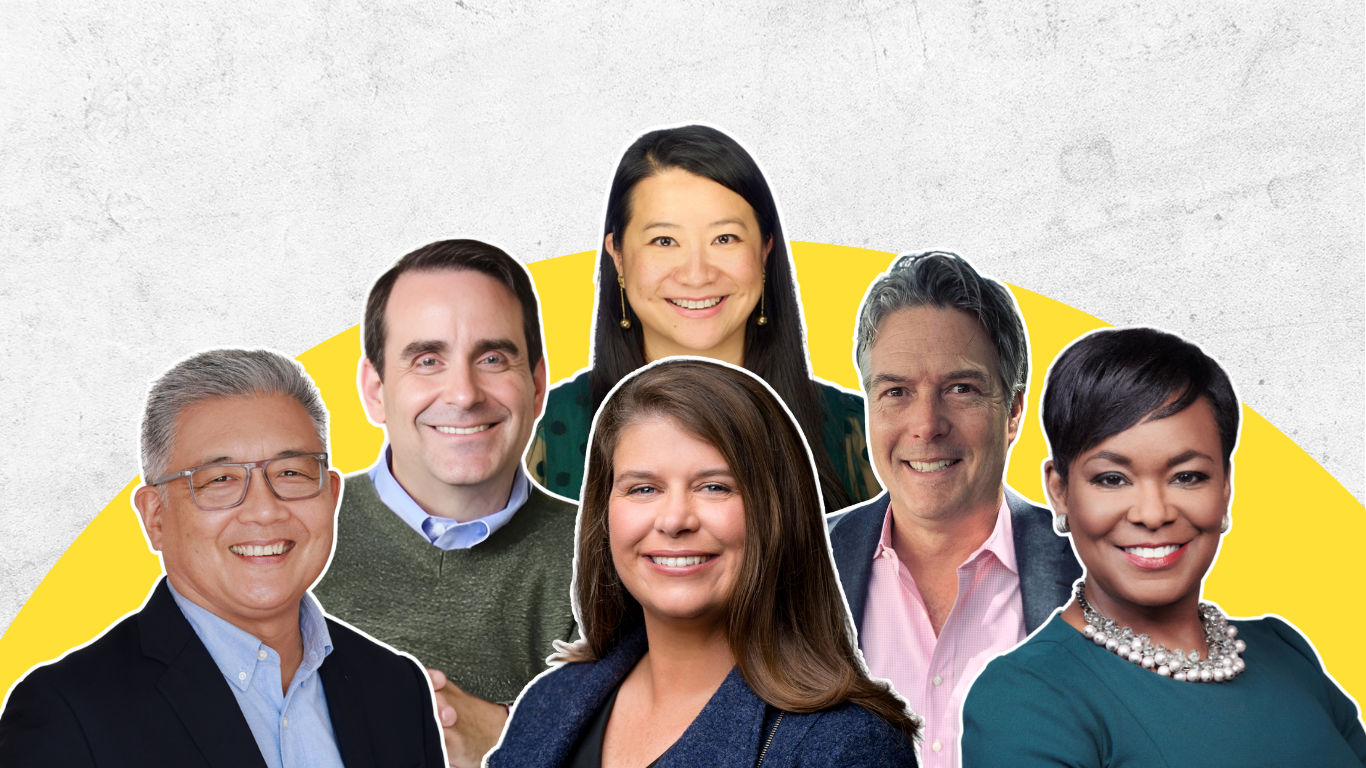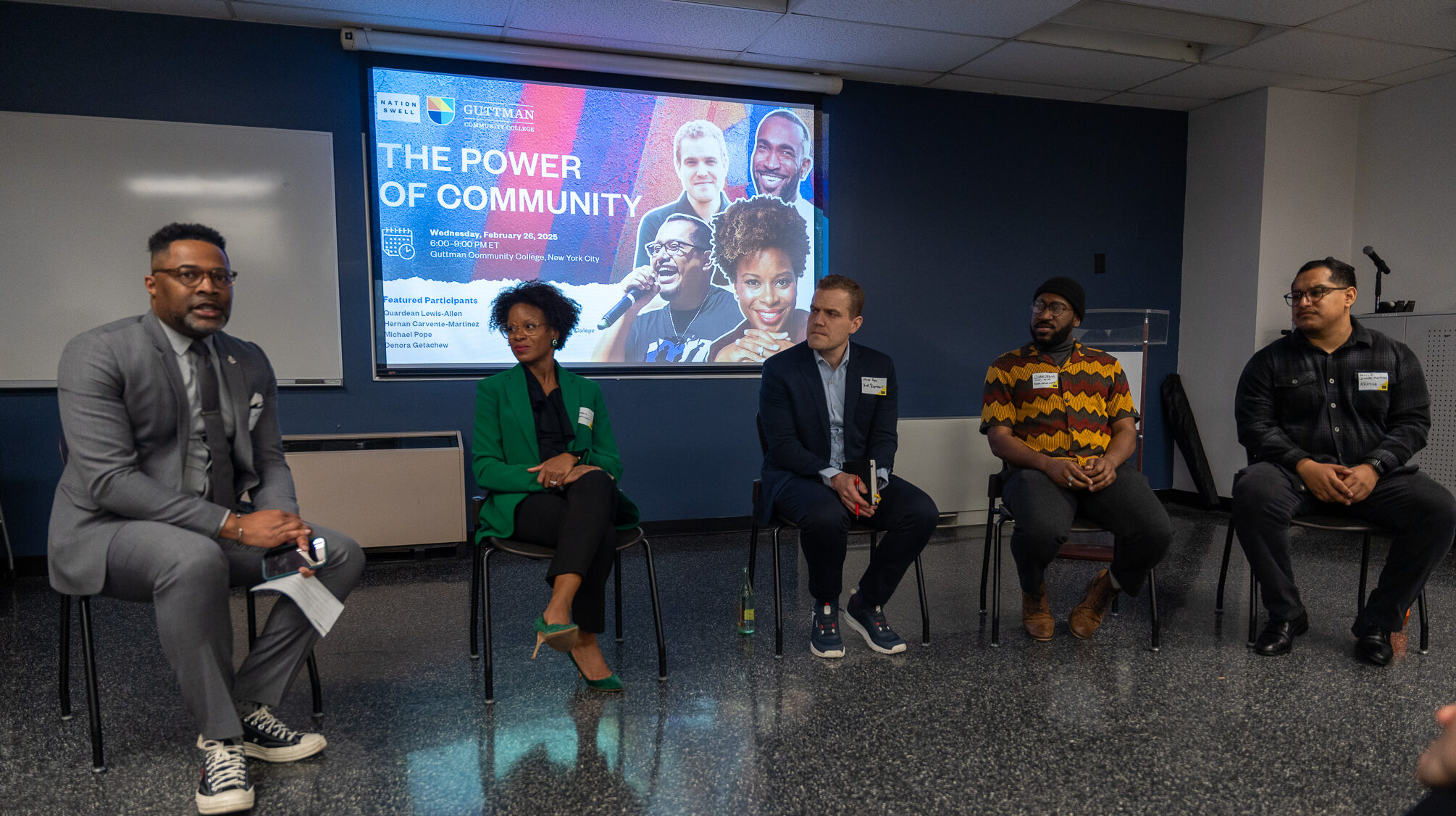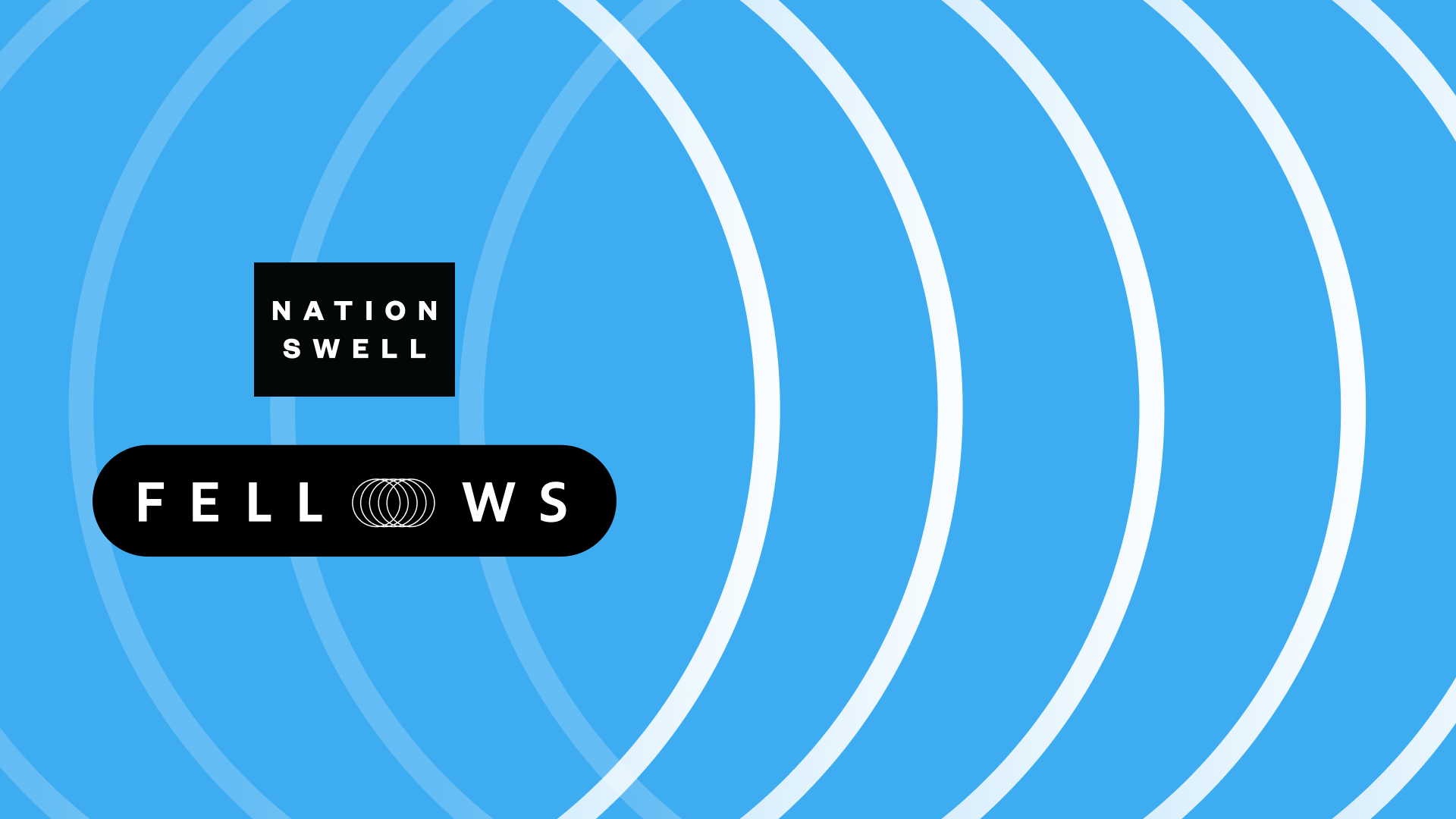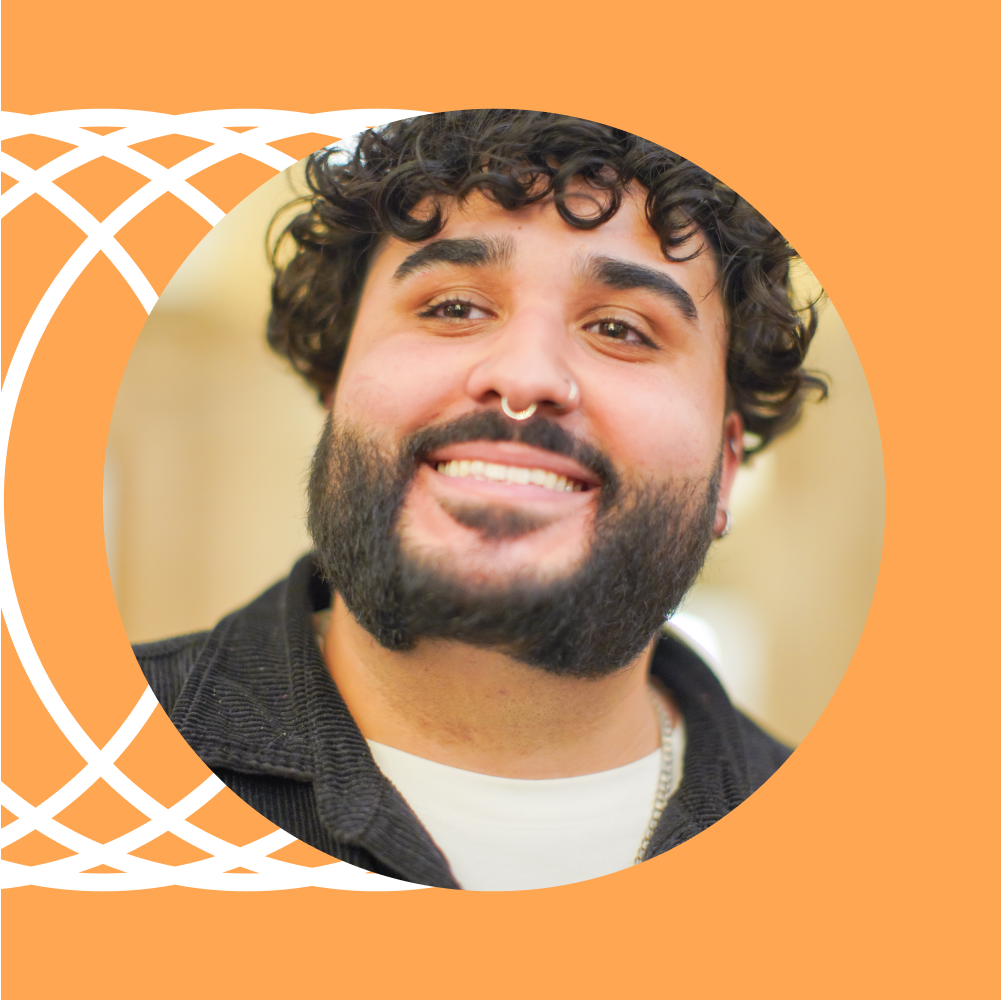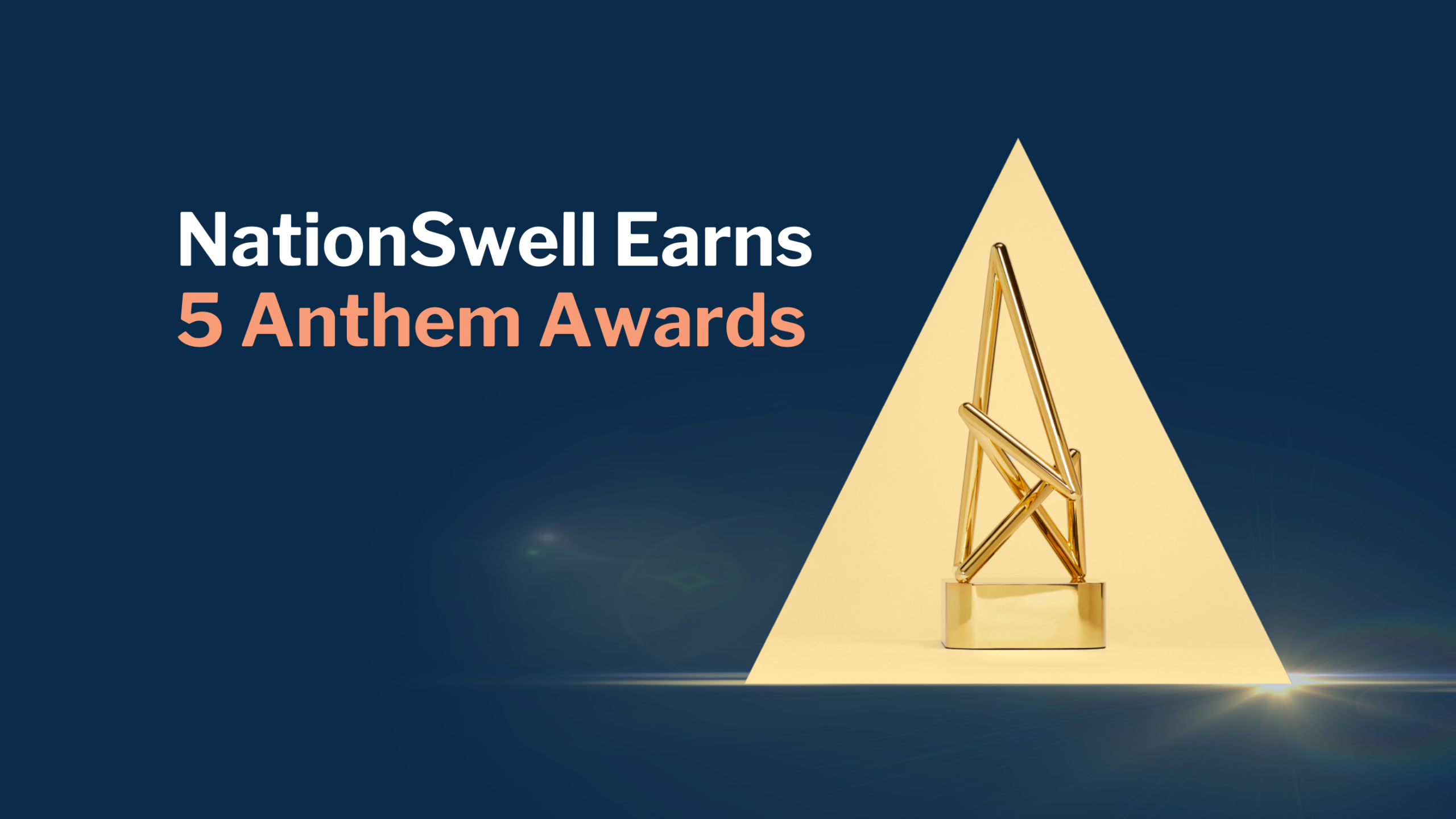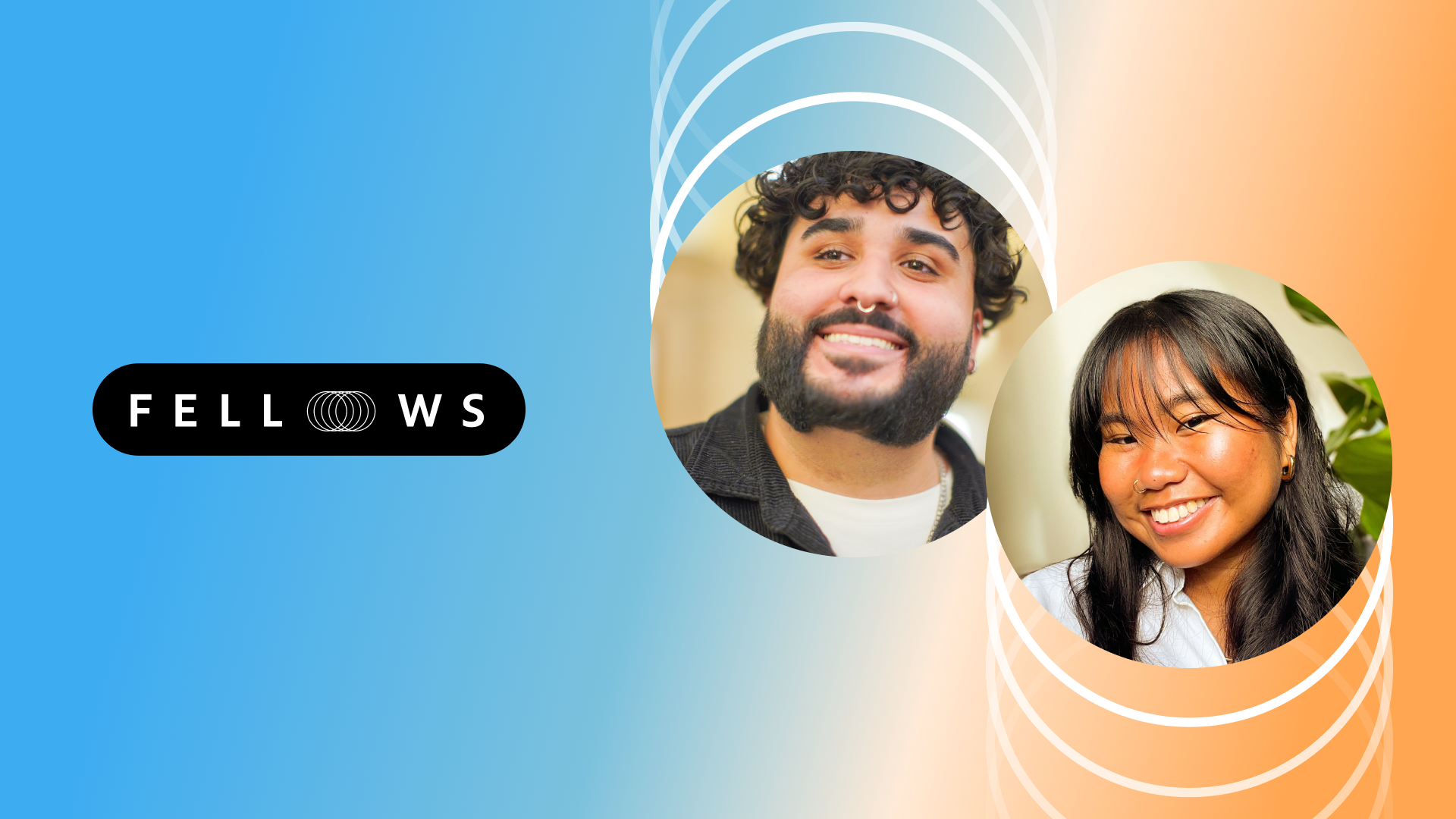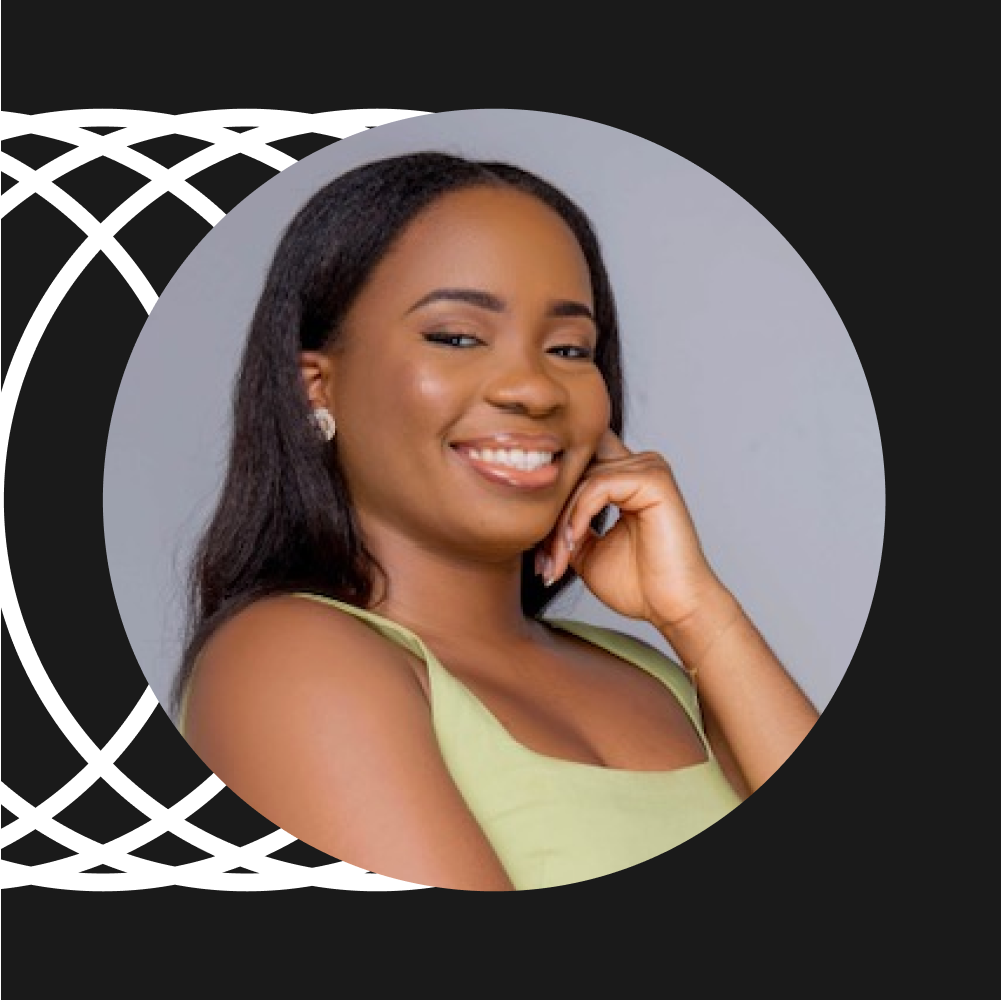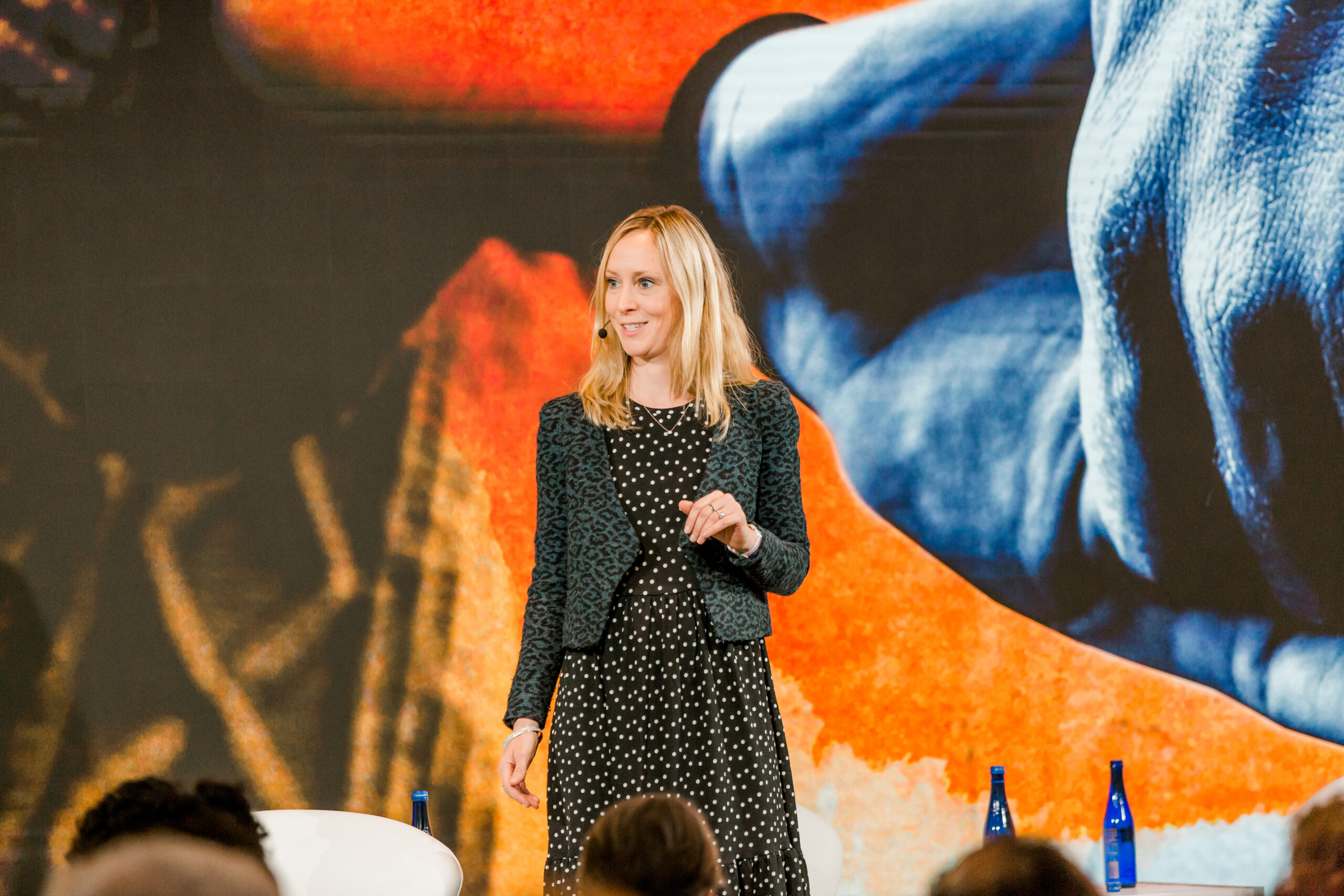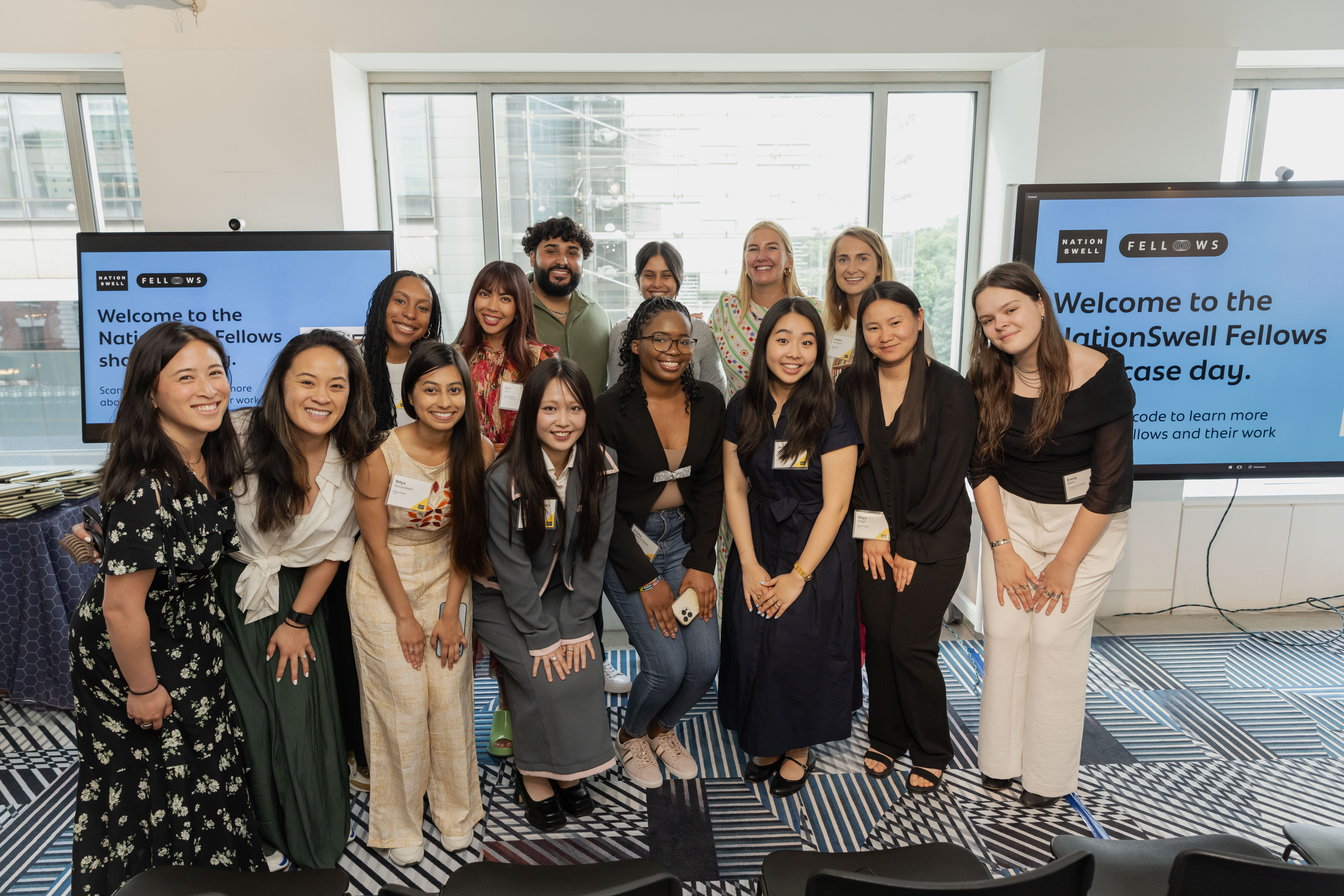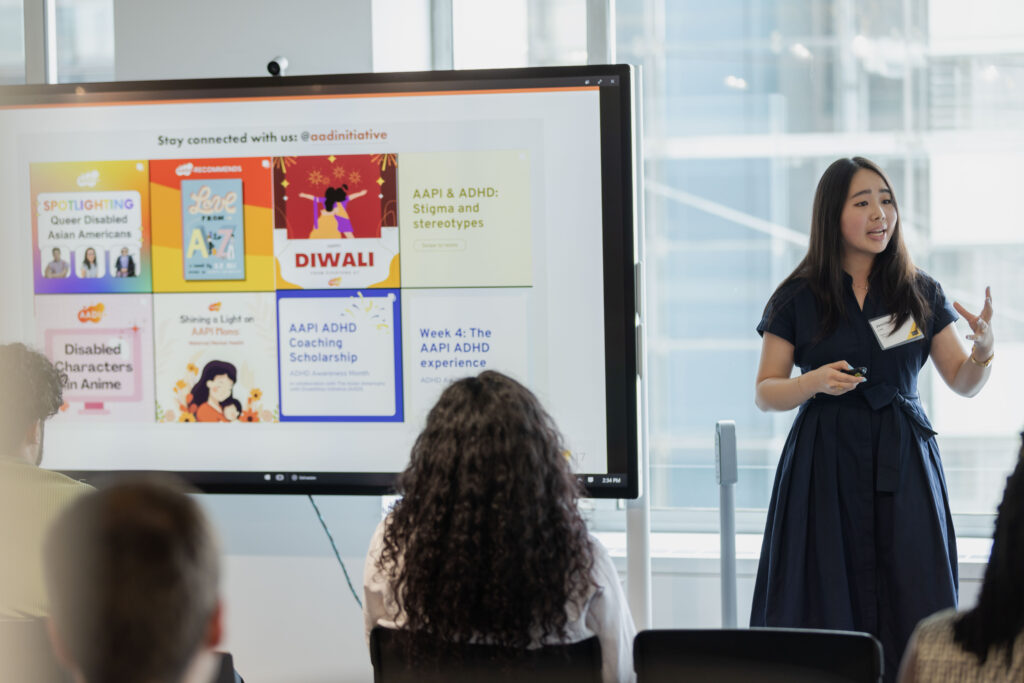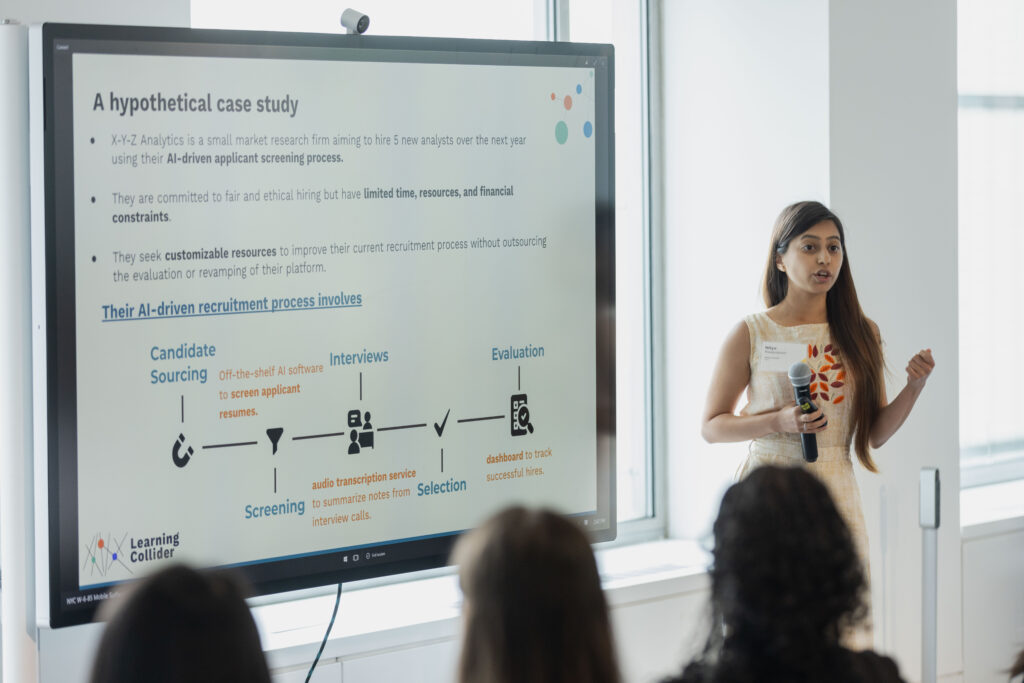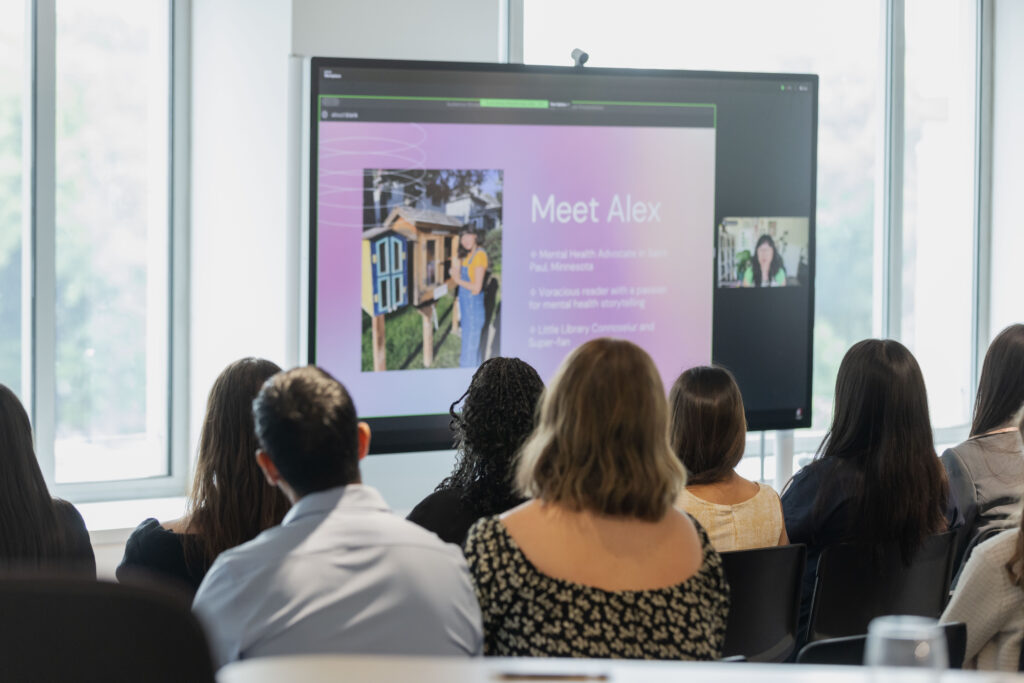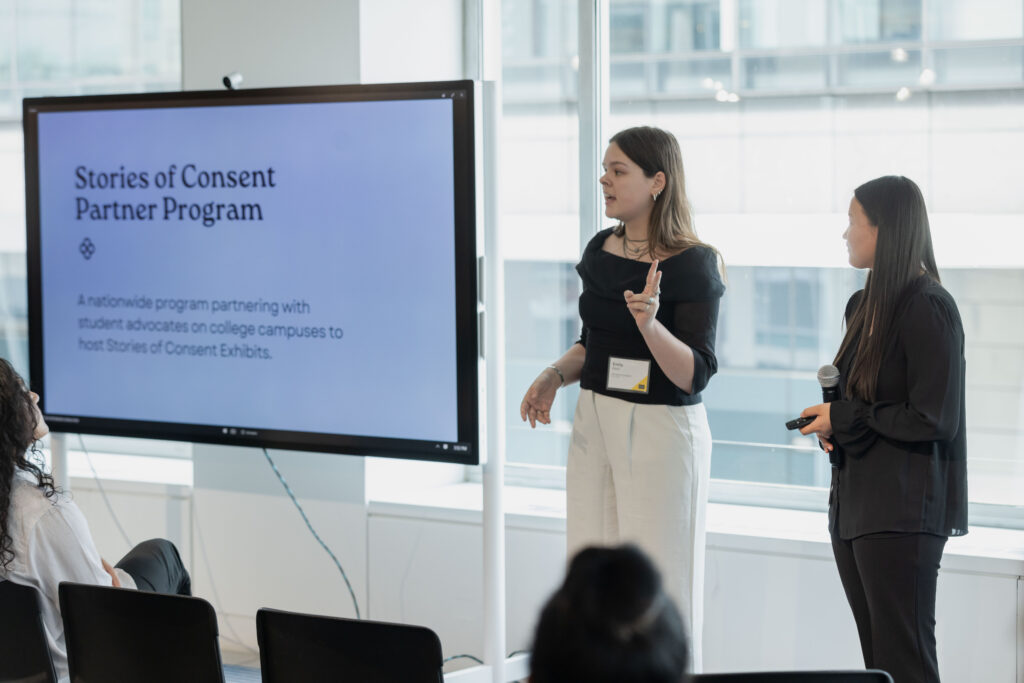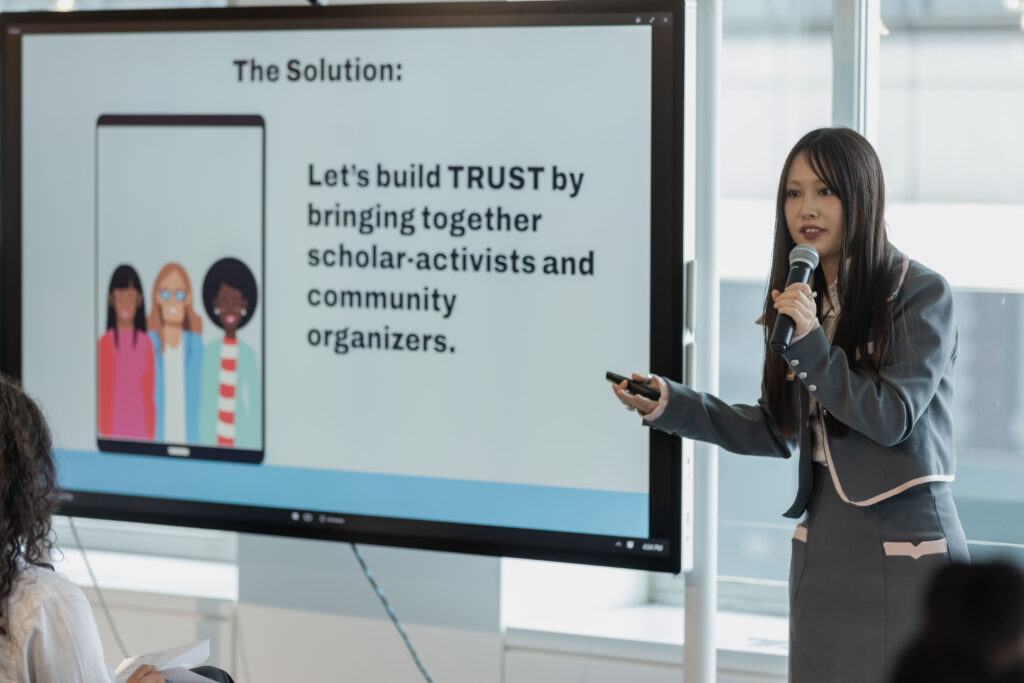One in ten high school students experience dating violence before graduation, and comprehensive sexual education has been linked to prevention. Young people are leading the charge in creating more accessible and inclusive education programs and tools. Two of our NationSwell Fellows, Emily Bach and Maya Siegel, are working to scale their efforts, which focuses on bringing consent-based education to high schools and universities. Here’s a closer look at their mission — and how you can help move it forward.
NationSwell: Tell us about your work and why it’s important.
Across the country, programs that help young people build safe, respectful relationships are under threat. Title IX, the federal statute that protects sexual violence survivors, has been significantly weakened due to the dismantling of the Department of Education. Schools are increasingly being pressured to limit how teachers and administrators discuss healthy relationships. Funding for sexual violence prevention education has been drastically reduced, with further cuts looming.
Stories of Consent is an organization devoted to community-based consent education, particularly in states and regions where governmental policies make formal consent education inaccessible – or entirely untenable. By sharing personal stories about what affirmative consent looks and feels like, we aim to make consent education more accessible, actionable, and relatable to young people. Our goal is to fill legislative and policy gaps to ensure that young people have the tools to form safe, healthy relationships.
NS: You both have worked alongside high school-age youth to build Stories of Consent. What are some lessons from collaborating with these young people?
Currently, if consent is taught in schools, young people typically learn about it through legal language or punchy acronyms. They learn what actions could lead to jail time. In some states, they’re taught that consent is as easy as FRIES: freely given, reversible, informed, enthusiastic, and specific. This is a great foundation – but it can’t be the end of the conversation. How many of us pause to run through a checklist before kissing someone?
We are almost always navigating consent in the context of our relationships, interpreting various forms of communication. Young people know this, even when their education doesn’t reflect it. They often turn to friends for advice on situations our education system fails to formally address. They learn about consent through public media and the internet. These facts reveal something important about consent education: even in states without mandates, consent education is happening – but it tends to happen on an individual or interpersonal basis.
Stories of Consent acts as a structured space for young people to have conversations about how consent looks, sounds, and feels in the context of their lives. We offer some ground rules for engagement – like defining affirmative consent – but we also encourage young people to engage with the project on their own terms. They bring the questions. We help create a safe space to explore the answers.
NS: How is implementing your education programming with college students different from students in middle school?
The best educational programs adapt to meet the people they serve. This often (but not always) means that college students are looking for guidance on navigating consent in increasingly complicated situations. For example, most of us would agree that discussing the relationship between consent and alcohol use would be inappropriate in a middle school classroom. But with college students, it’s one of the most common and relevant topics of discussions. Our project is designed to address consent in the kinds of situations students are most likely to encounter, and it naturally evolves with those situations.
Importantly, this dynamic holds true across different identity groups. Our stories have been used in a support group for transgender students, where a facilitator focused on stories from LGBTQ+ youth. They’ve also been used by feminist groups to examine the different expectations placed on women’s sexuality. We collect stories from people of different ages, backgrounds, identities, and experiences so students can see themselves in the stories — and find language that fits their own experiences.
NS: What do you hope your work will accomplish long-term?
Long term, our goal is to contribute to a cultural shift in how the next generation understands consent. For example, 50 years ago, the culture around drunk driving was vastly different. It was frowned upon, but not widely seen as a serious safety risk. That perception changed through advocacy – largely led by mothers – who highlighted its dangers and potential long-term impacts on others. As a result, rates of drunk driving have substantially decreased.
Our goal is to foster a similar cultural shift around consent. We want it to be widely understood as necessary for any healthy romantic or sexual activity. We believe that shift will only happen when young people understand the human impact of practicing consent.
NS: How can people get involved?
Visit storiesofconsent.com to read or share a story, or bring Stories of Consent to your school or organization. Teachers, students, school administrators, and community organizers can also reach out to us to host Stories of Consent exhibits at their schools. We provide the materials for free. Our contact information can be found at our website or on our Instagram page, @storiesofconsent.
Additionally, we partner with SafeBAE to train young people to become educators in their communities through their Peer Educator Training. If you’re interested in becoming a peer educator or supporting one, visit safebae.org to learn more.
Learn more about the NationSwell Fellows program: https://nationswell.com/studio/nationswell-fellows/


